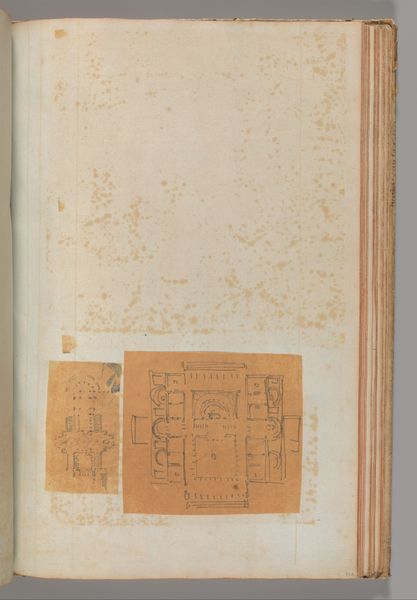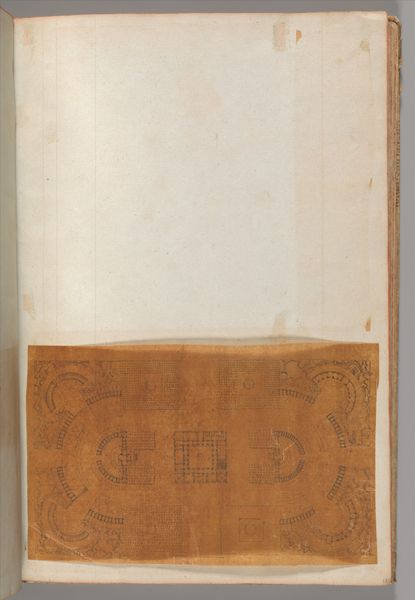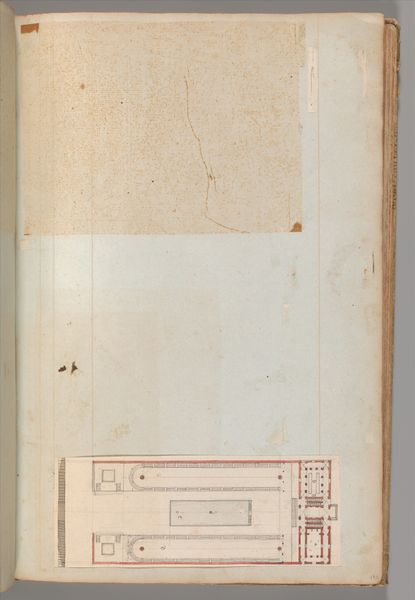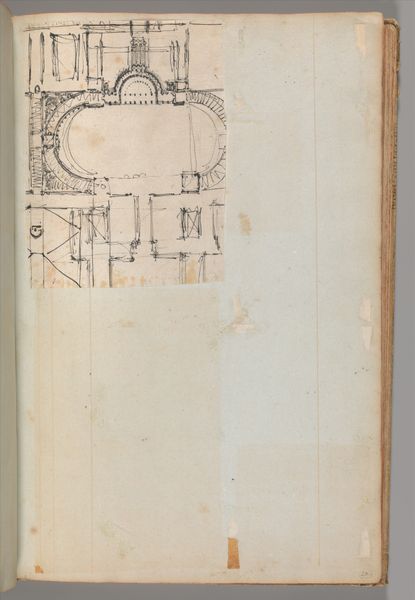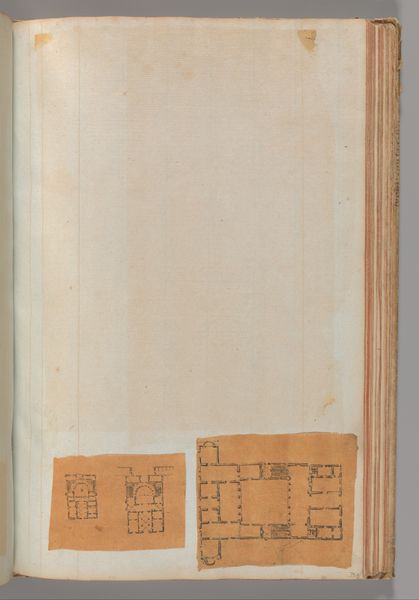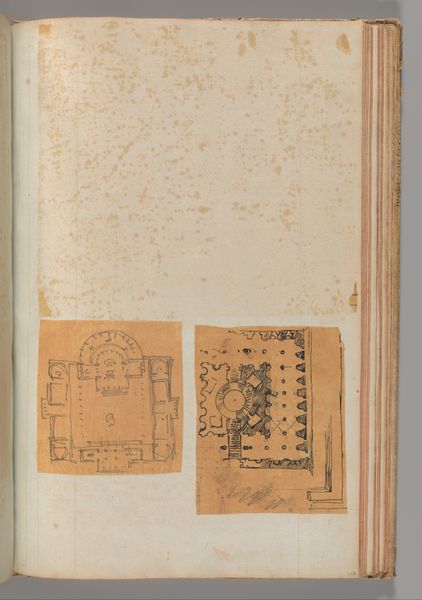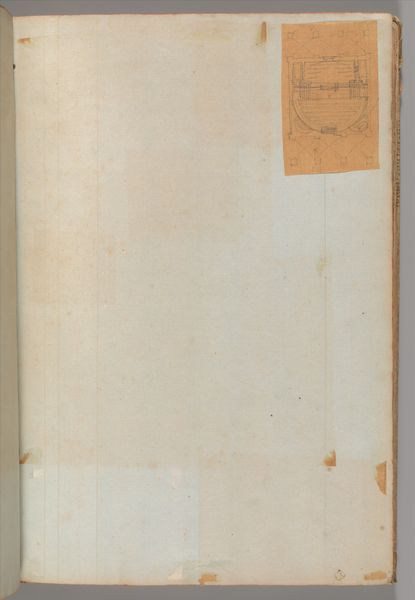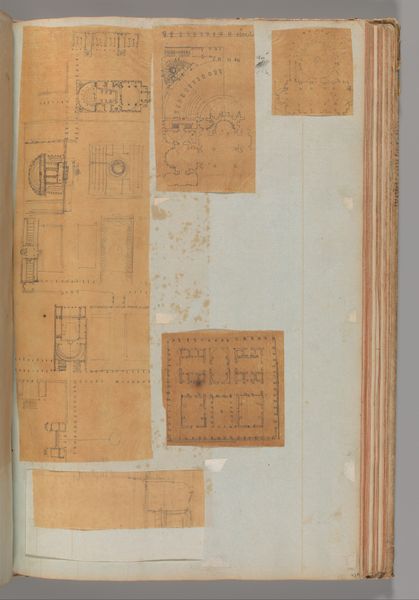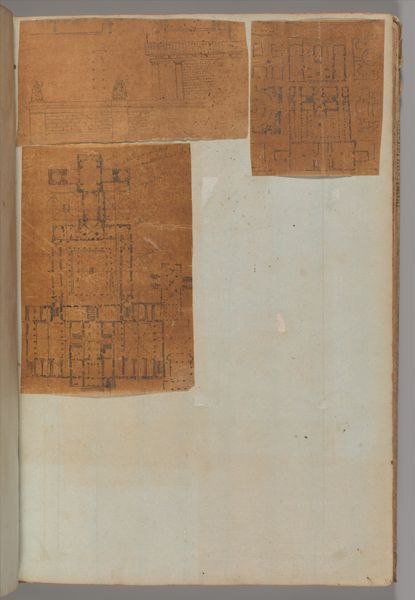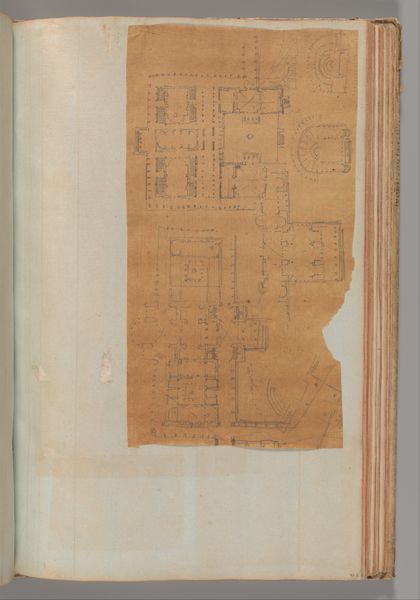
Page from a Scrapbook containing Drawings and Several Prints of Architecture, Interiors, Furniture and Other Objects 1795 - 1805
0:00
0:00
drawing, coloured-pencil, print, architecture
#
drawing
#
neoclacissism
#
coloured-pencil
# print
#
landscape
#
coloured pencil
#
geometric
#
architecture
Dimensions: 15 11/16 x 10 in. (39.8 x 25.4 cm)
Copyright: Public Domain
Curator: At first glance, I see rigid geometry in these faded, antique pages. Editor: Precisely! This is a page from a scrapbook by Charles Percier, dating from 1795 to 1805. It contains drawings and several prints depicting architecture, interiors, furniture, and various other objects emblematic of the Neoclassical style. Curator: Knowing it’s Neoclassical certainly contextualizes the plans and geometric designs. What's particularly striking is how Percier uses both drawing and printmaking. That combined media approach begs a question of labor and design. Were these ideas preliminary sketches destined for mass production through print? Or personal, reflective notations? Editor: The drawings and prints coexisting this way illuminates how design ideas were both conceived and disseminated during that period. Think of Percier moving fluidly between handcrafted sketches that allowed room for nuanced individual design ideas and the reproducibility afforded by prints aimed to democratize access to his artistic ideals. Curator: And this is key to unpacking the broader Neoclassical movement! Widespread replication and aspiration that all tiers of society could experience similar standards of beauty and utility. I am curious, however, about the function of the book as a "scrapbook". This suggests an organizing principle. Editor: Absolutely. As a scrapbook, the page signals that artistic creation isn’t about singular, isolated masterworks but rather an accumulation of visual ideas through collection and association. Think of it as a kind of material "mood board", hinting to the kind of aspirational social relations people envisioned while living within newly-built social, economic, and geographic constructs. The binding as evidence! Curator: I agree completely. It reshapes our understanding from a collection of individual projects into a network of creative, cultural exchange and aspiration within the era. Thanks, this insight challenges existing historical paradigms and presents avenues for a richer, more nuanced narrative. Editor: Exactly, recognizing the nuances allows for a re-evaluation of materiality and its social meaning!
Comments
No comments
Be the first to comment and join the conversation on the ultimate creative platform.
